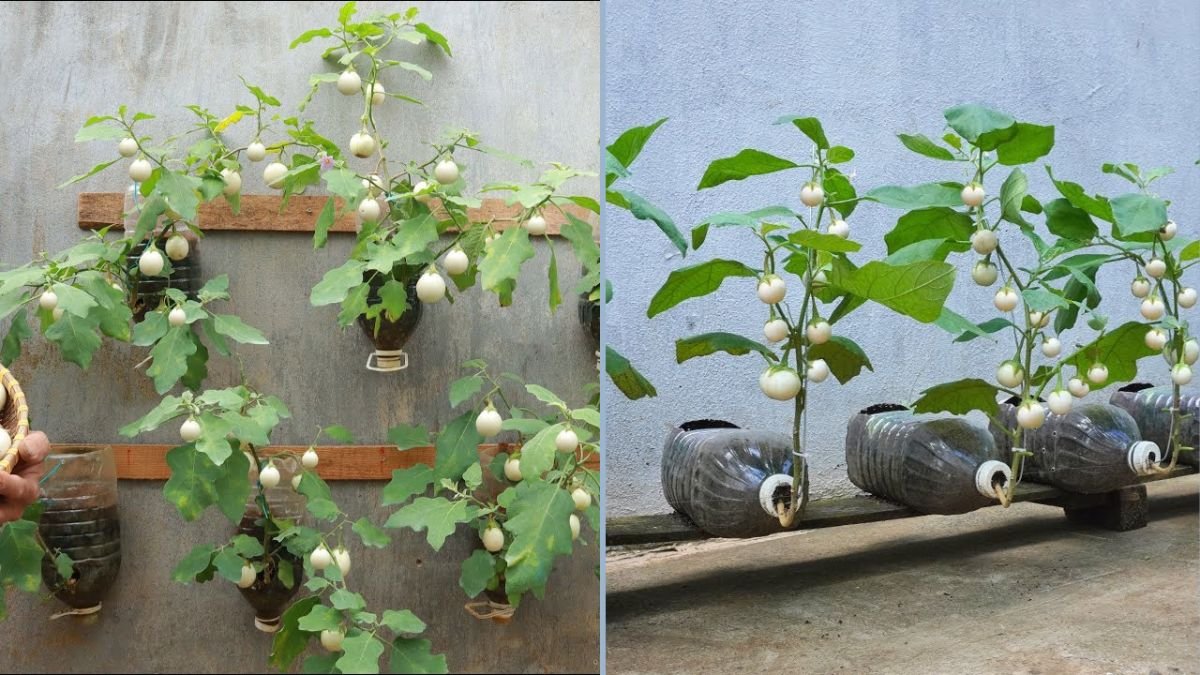Eggplant, also known as aubergine, is a popular and versatile vegetable used in cuisines worldwide. From stir-fries and curries to roasted dishes and dips, eggplant adds flavor, texture, and nutrition to meals. However, finding large, crunchy, high-quality eggplants can sometimes be a challenge, and buying them from markets or supermarkets can be expensive.
What if you could grow your own eggplants at home, ensuring they are fresh, crunchy, and free from harmful chemicals? Even better, what if you could do it using used plastic bottles, transforming waste into a productive and sustainable home garden solution?
This unique method allows urban gardeners, small-space growers, and eco-conscious individuals to cultivate eggplants efficiently, reduce costs, and enjoy a bountiful harvest. In this blog, we’ll cover a step-by-step guide on how to grow eggplants in plastic bottles, care tips, and best practices to ensure large, crunchy fruits.
Why Grow Eggplants in Plastic Bottles?
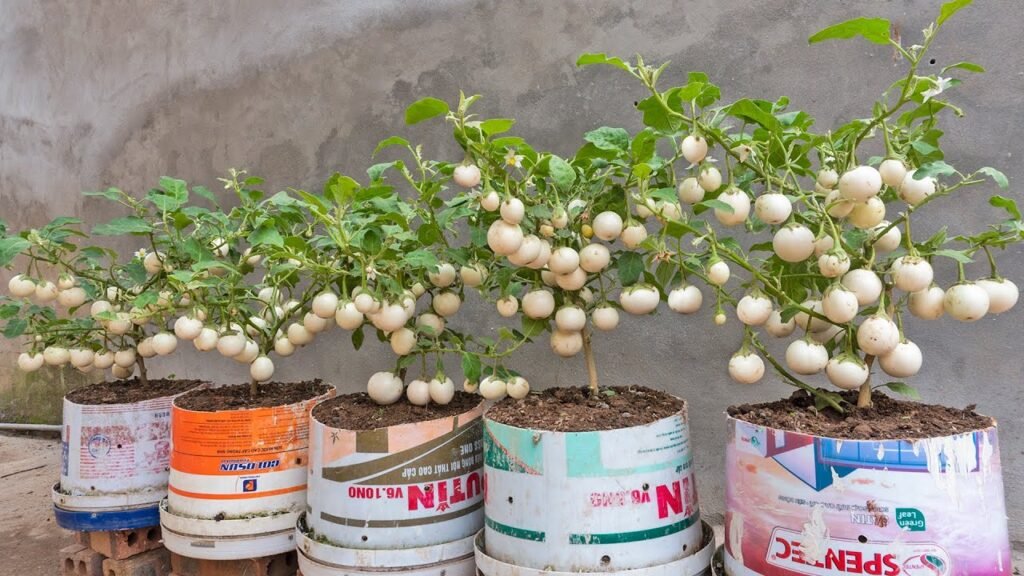
1. Eco-Friendly Gardening
Plastic waste is a significant environmental concern. Repurposing used plastic bottles as planters gives these materials a second life and reduces environmental pollution.
2. Space-Saving
Plastic bottles are perfect for vertical or container gardening. This method is ideal for small gardens, balconies, rooftops, or urban spaces where traditional soil beds may be limited.
3. Better Root Health and Drainage
By customizing drainage holes in bottles, you can prevent waterlogging and root rot, ensuring healthier, larger eggplants.
4. Mobility
Bottles are lightweight and portable, allowing you to move plants to catch sunlight or protect them from extreme weather conditions.
5. Cost-Effective
Instead of buying pots or raised beds, using discarded bottles saves money while creating a functional, sustainable planting system.
Understanding Eggplant Growth
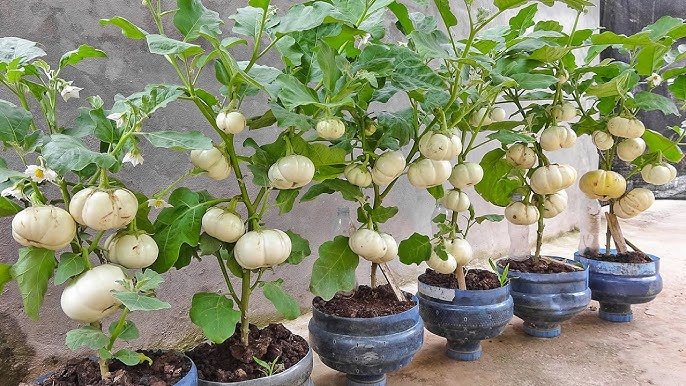
Before planting, it’s essential to understand the growth requirements of eggplant:
- Warm-Season Crop: Eggplants thrive in temperatures between 70–85°F (21–29°C).
- Sunlight Needs: They require at least 6–8 hours of direct sunlight daily.
- Soil Requirements: Well-draining, fertile soil rich in organic matter is ideal.
- Fruiting Duration: Eggplants typically take 70–90 days from transplanting to harvest.
- Pollination: While eggplants are self-pollinating, insects can enhance fruit development.
Understanding these factors ensures a higher yield and larger, healthier fruits.
Materials Needed
To grow eggplants in plastic bottles, gather the following materials:
- Used plastic bottles (1.5–2 liters or larger)
- Potting mix – Combination of garden soil, compost, and sand
- Eggplant seeds or seedlings – Choose varieties known for large, crunchy fruits
- Scissors or utility knife – To cut the bottles
- Watering can – For consistent watering
- Slow-release fertilizer (optional)
Step-by-Step Guide to Growing Eggplants in Plastic Bottles
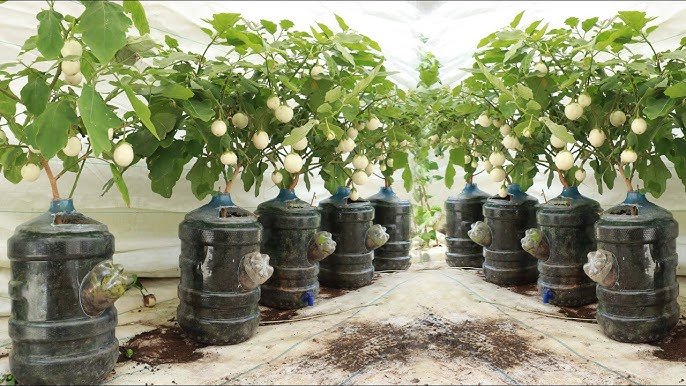
Step 1: Prepare the Plastic Bottles
- Cut the top portion of the bottle off to create an open planter.
- Drill or poke 3–4 drainage holes at the bottom to prevent waterlogging.
- Optionally, cut a small side window to monitor root growth.
Step 2: Add Soil and Fertilizer
- Place a layer of small stones or gravel at the bottom for improved drainage.
- Fill the bottle with potting mix, leaving about 2 inches from the top.
- Mix in slow-release fertilizer if desired to support healthy growth.
Step 3: Plant Seeds or Seedlings
- Seeds: Sow 2–3 seeds per bottle, ¼–½ inch deep.
- Seedlings: Transplant young seedlings carefully, ensuring roots are well-covered with soil.
- Water gently to help settle the soil.
Step 4: Position the Bottles
Place the bottles in a sunny location where they receive at least 6–8 hours of sunlight daily. Rotate bottles occasionally for even exposure.
Step 5: Watering and Care
- Keep the soil consistently moist but not soggy.
- Water deeply once or twice a week, depending on temperature and rainfall.
- Mulch the top layer to retain moisture and regulate soil temperature.
Fertilizing Eggplants
- Early Growth: Apply a nitrogen-rich fertilizer to encourage strong stem and leaf development.
- Fruiting Stage: Switch to a phosphorus and potassium-rich fertilizer to promote larger, crunchy fruits.
- Avoid over-fertilization with nitrogen during fruiting, as it can lead to excessive foliage and smaller fruits.
Managing Pests and Diseases
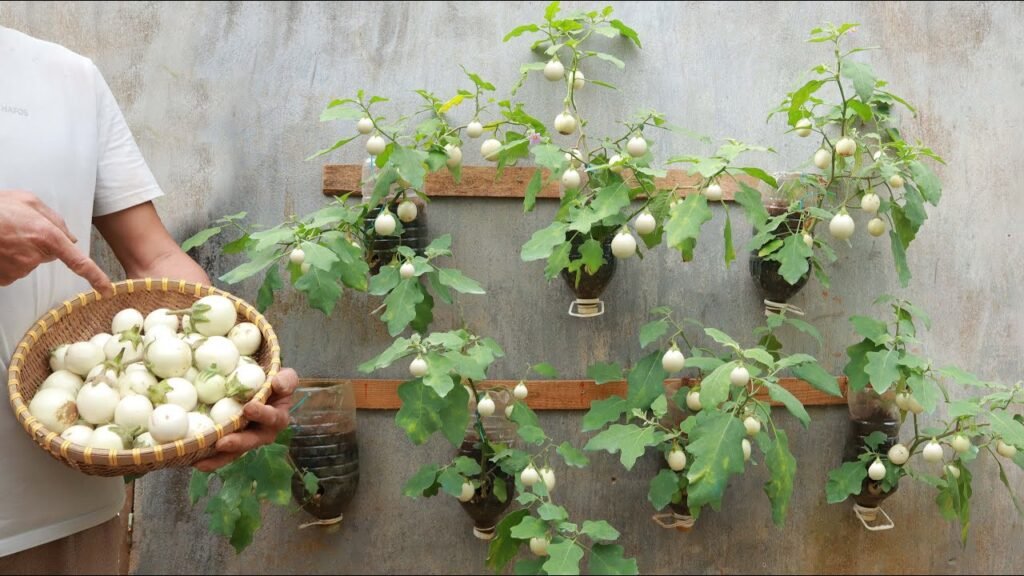
Even in bottles, eggplants can face pest problems:
- Aphids: Spray neem oil or mild soapy water.
- Flea Beetles: Use floating row covers to protect young plants.
- Spider Mites: Regularly check undersides of leaves and spray with water or organic insecticide if necessary.
Diseases like fungal wilt or leaf spot can be minimized with proper drainage, sunlight, and air circulation.
Pruning and Supporting Eggplants
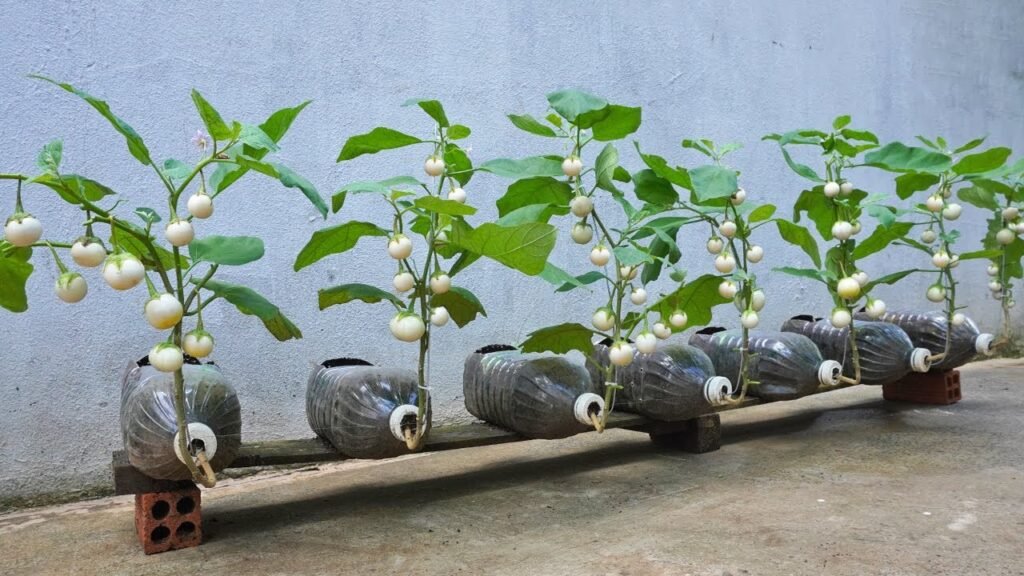
- Pruning: Remove weak, yellow, or overcrowded leaves to improve airflow and direct energy to fruit production.
- Support: Use stakes or small trellises to support growing plants and prevent the weight of large fruits from bending or breaking the stems.
Harvesting Eggplants
- Timing: Harvest when the fruit reaches its mature size, color, and firmness. Overripe eggplants can become bitter and spongy.
- Method: Use a sharp knife or scissors to cut the fruit from the stem, leaving a small portion of stem attached.
- Frequency: Regular harvesting encourages more fruit production and prevents plants from putting too much energy into overripe fruits.
Advantages of This Method
- Large, Crunchy Fruits: Proper care produces eggplants that are firm and flavorful.
- Urban Gardening-Friendly: Ideal for balconies, terraces, or small yards.
- Cost-Effective: Eliminates the need to buy expensive, high-quality eggplants.
- Eco-Friendly: Repurposes plastic bottles, reducing environmental waste.
- Easy Maintenance: Portable, lightweight bottles simplify watering, sunlight management, and care.
Tips for Maximizing Yield
- Succession Planting: Plant new seeds every few weeks for a continuous harvest.
- Consistent Watering: Avoid letting soil dry completely or become waterlogged.
- Adequate Sunlight: Rotate bottles to ensure all plants receive sufficient sunlight.
- Pollination: Encourage insects or gently hand-pollinate flowers to improve fruit set.
- Pruning: Remove excess shoots to focus energy on fewer, larger fruits.
Culinary Uses of Homegrown Eggplants
- Grilled or Roasted: Slice and season for a delicious side dish.
- Stir-Fries: Adds flavor and texture to mixed vegetable dishes.
- Curries and Stews: Perfect for absorbing spices and sauces.
- Dips: Make creamy eggplant dips like baba ganoush.
- Pickles: Preserve small eggplants for long-term use.
Conclusion
Growing eggplants in used plastic bottles is a unique, innovative, and sustainable gardening method that allows anyone to enjoy large, crunchy fruits at home. This approach transforms waste into a productive tool, maximizes space in small gardens, and reduces reliance on supermarket vegetables.
With proper soil preparation, watering, fertilization, pruning, and pest management, this method can yield high-quality eggplants that are fresh, flavorful, and nutritious. It’s a cost-effective solution for urban gardeners, beginners, and anyone seeking a more sustainable lifestyle.
So next time you have empty plastic bottles, don’t discard them—repurpose them into thriving eggplant planters. With patience, care, and attention, you can enjoy a bountiful harvest of large, crunchy eggplants grown right at home.
